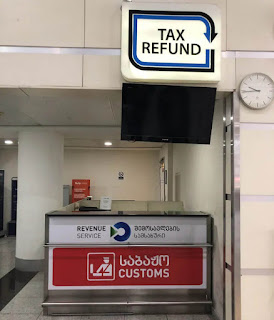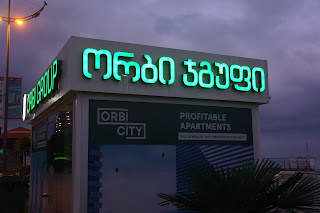Temples of Angkor, Cambodia
The absolute highlight of our travels in South-East Asia has been meeting our friends. First Martijn and Uswa came to see us in Chiang Mai, Thailand, and now Bill and Betty in Phnom Penh, Cambodia. Bill and Betty wanted to see the famous temple area of Angkor so we joined the caravan and headed to Siem Reap. The bus ride was slow even though the roads were pretty good. The 225-kilometre-ride took seven hours.
We were greeted by a scam on arrival. The bus left us at the bus station three kilometers away from the city centre instead of taking us there. But we managed to escape the herd of aggressive tuk-tuk drivers as the company had arranged a ride to town in one of them without compulsory extra cost. On the way we had to listen to the marketing bullshit about Angkor tours, guest houses, and demands for a tip. It is not always easy nor pleasant to deal with service providers (read: mafias) as we learned the following day.
Scams and rip-offs

Next day we hired a taxi for one whole day which cost US$ 20. It was expensive, but still the least expensive of the options available. We were taken by surprise when all of a sudden the guy refused to drive any further unless we paid him more. It was noon and we had only been driving for less than three hours. The guy claimed that we had paid for a "short tour" which is a kind of preset route that tourists are supposed to take, and then continue the next day. This ingenious system of big and small tours is of course designed to ensure more money for local service providers.
The driver got totally out of control and was yelling at us. It is extremely rare to see that kind of behaviour in Asian cultures where one of the most important things is not to lose face. The main reason for the driver’s anger was that we were going through the temples too quickly. He did not have time to play cards with his colleagues, and of course he was afraid of losing the next day’s ride (which we had not even promised him). The guy was acting aggressively so we left and did not pay him anything. Unfortunately, most tourists just give in when something like this happens so similar scams will happen again and again.
The whole temple area was—sad to say—a tourist rip-off. The entrance fee was US$ 20 for a one-day pass, 40 for a three-day pass. We saw the area easily in one day as we are not professional archaeologists or photographers. Besides, we are not keen on seeing any tourist attractions, as there is always a terrible hassle with all the hawkers molesting you. Any place boasting to be one of the world’s biggest wonders or offering ecstatic tours is a place to be avoided. The same applied to Angkor. It is just another market place, very far from a sacred temple area. There were lots of street vendors offering us all kinds of things from postcards to flutes. Usually the vendors were little, toothless children who should have been at school instead.
The yearly tourist influx in the area is huge, around one million visitors. We almost got claustrophobia when all the tour groups of Chinese, Japanese and Korean people rushed in. Men were pushing and not apologising at all, and of course everybody was taking photos with their many cameras. Every one of these tourists is contributing to the destruction of the precious archaeological heritage by tramping around and damaging the area, not to talk about how tourists distort the local economy by excessive money-spending. All the service providers related to Angkor have fixed prices set for tourists, and they are controlled by local mafia (police). No matter where you go in the area, a tuk-tuk ride, for example, will cost you US$ 2. It is a huge amount of money for locals as the average monthly salary is around US$ 20, and parents who sell their 5- to 6-year old children to brothels, only get 10 (BBC document on Cambodia’s child trade, 2007). Worst of all, only tiny part of the money ends up in the preservation work. According to Lonely Planet Cambodia (Nick Ray, 2005) only 10% of fees goes to the preservation carried out by Apsara authority (Sokimex snatches 15% for selling tickets, and the rest 75% disappears to the deep pockets of Finance Ministry).
Join the Angkor Temples virtual tour
After sacking the driver we walked over five hours around the area because we did not want to pay the outrageous fixed prices of tuk-tuks. It was actually a lovely walk. We went to see the temples via small dirt roads through the jungle, guided by Indiana Bill, and got a better feeling of how big the area was. We saw many locals who greeted us happily. They were living in small shacks in the middle of the temple area. We were definitely the only tourists walking there that day. It was like in the 50’s when Santeri’s grandfather and father visited the area. There were no mass tourists, tuk-tuks, or roads. That is, in our opinion, how it should have stayed instead of becoming just another wonderland for tourists to explore and boast about.
Angkor Temples virtual tour
Welcome to Angkor Temples virtual tour! This way you can avoid all the usual scams and rip-offs, and visit the temples without harming them.

Click the areas on the map above to enter different areas of the Temples of Angkor.
We collected all the photos we took in cooperation with Bill & Betty and Simon, and made the virtual tour of Angkor. Click the map above and there you go. Join our virtual tour and let Angkor’s heritage live.
Country: Cambodia







Comments
Justiina
However, George our driver was a very friendly fellow who was really a pretty good tour guide. We quibbled for a while and ended up paying him about $18 for a good half day's tour, the Short Tour or whatever they call it. We might have visited the temple complex a second time but for the excessive entrance fee, a fee 99% of Cambodians could never afford.
Actually the disparity in fees is common here in Thailand too as I'm sure you know. There are generally two prices for the National Parks, for example, the Thai price and the farang price which is sometimes as much as ten times greater. It's a foolish and unfair system but it is something we must accept I reckon.
Anyway, keep up the good work.
Dave
Bangkok
Our solution to the annoying double pricing has been avoiding those places and countries, and sharing our thoughts with other travellers.
Happy travels,
Päivi & Santeri